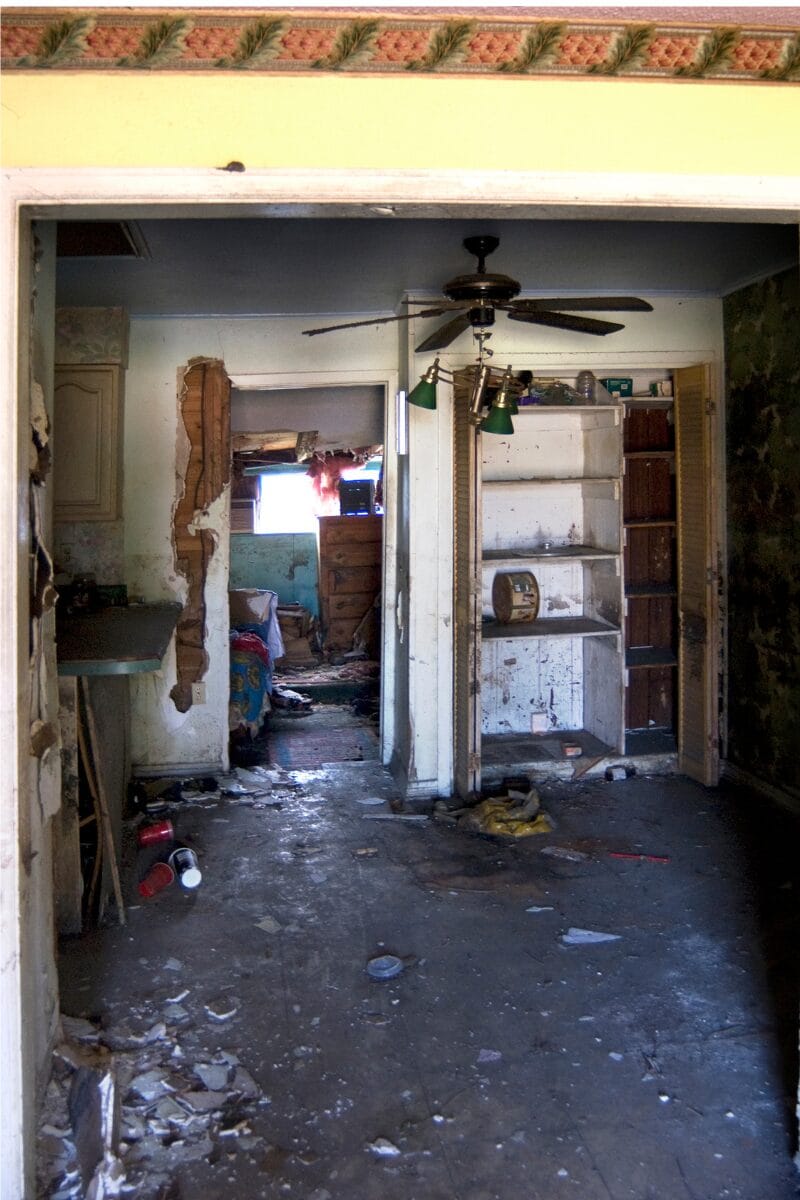Cyclone Alfred has caused unprecedented heavy rainfall and flooding across Brisbane and the Gold Coast. We extend our deepest sympathies to everyone affected. Cyclone recovery involves careful planning and cleaning, but if done incorrectly, it can lead to further damage and pose serious health risks. This article outlines six things you should avoid when cleaning up after a cyclone and provides safe and effective alternatives.
1. Using Mould Removers Before Drying Your Home
Why you should avoid it:After a cyclone, homes retain a significant amount of moisture. Using mould removers before allowing the space to dry properly reduces their effectiveness, as mould spores can penetrate deep into surfaces. Additionally, using chemicals in a damp environment can release harmful fumes, increasing health risks.
Proper approach:Prioritise drying your home by opening windows for ventilation. If the cyclone aftermath leaves conditions too humid, use fans and dehumidifiers to accelerate the drying process. Only after the walls and floors are completely dry should you apply mould removers and thoroughly scrub the affected areas.
2. Ignoring the Risk of Electrocution
Why you should avoid it:Cyclone-related flooding can compromise electrical systems, creating a high risk of electrocution. Wet areas combined with live electrical wiring can result in severe injury or even fatalities.
Proper approach:Before beginning any cleanup after a cyclone, turn off the electricity at the main switchboard. If you are unsure whether it is safe, consult a licensed electrician. Any electrical appliances that have been submerged during the cyclone should be checked by a professional before use.
3. Cleaning Up After a Cyclone Without Protective Gear
Why you should avoid it:Cyclone-induced floodwater often contains bacteria, mould, and hazardous chemicals. Direct contact with contaminated water can lead to skin infections, while airborne spores and dust can cause respiratory problems.
Proper approach:Always wear a dust mask (preferably N95), gloves, and waterproof boots when cleaning up after a cyclone. If handling materials affected by mould, consider wearing safety goggles as well. After completing cyclone cleanup tasks, wash your hands thoroughly and launder any contaminated clothing immediately.
4. Using Flood-Damaged Furniture and Carpets Immediately
Why you should avoid it:Furniture and carpets that have been soaked during a cyclone provide an ideal environment for bacteria and mould to grow. Even if they appear dry on the surface, trapped moisture can lead to unpleasant odours and health risks.
Proper approach:If possible, seek professional cleaning services for upholstered furniture and carpets affected by a cyclone. If cleaning at home, dry them thoroughly in a well-ventilated area and disinfect them with antibacterial sprays. If they retain a musty odour or visible mould growth, it is best to dispose of them.
5. Consuming Food or Drinks That Have Been Exposed to Floodwater
Why you should avoid it:Cyclone-related floodwater may carry bacteria, sewage, and chemicals that can contaminate food and beverages. Even sealed items, such as canned goods, may become unsafe if they have been submerged for long periods.
Proper approach:Dispose of any food that has come into contact with cyclone floodwater, even if it appears intact. Fresh produce, refrigerated items, and perishable goods should also be discarded if there has been a power outage lasting more than four hours. Bottled drinks should be avoided unless their seals are completely intact.
6. Attempting to Clean Everything on Your Own
Why you should avoid it:Cleaning up after a cyclone is physically and emotionally exhausting. Overexerting yourself can lead to fatigue, increased stress, and overlooked hazards such as hidden mould or structural damage.
Proper approach:Seek assistance where possible. Professional cyclone cleaning services, community volunteers, and government aid programs may be available to help. Neighbours and family members can also provide support, reducing the burden on individuals tackling cyclone cleanup efforts alone.
Conclusion
Cleaning up after a cyclone requires caution and the right approach to avoid worsening the situation. Making informed decisions can prevent further damage and safeguard your health.
Six things to avoid when cleaning up after a cyclone:
- Using mould removers before drying your home
- Ignoring the risk of electrocution
- Cleaning without protective gear
- Using flood-damaged furniture and carpets immediately
- Consuming food or drinks that have been exposed to floodwater
- Attempting to clean everything on your own
We sincerely hope for your safety and a swift recovery for everyone affected by the cyclone. Please take care, seek assistance where needed, and move forward one step at a time.

